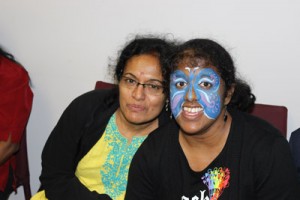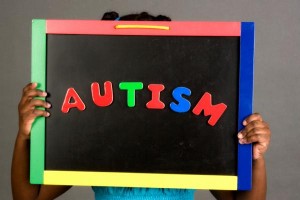By Priya Nadarajah @thesaaac

Photo: Courtesy South Asian Autism Awareness Centre
April 2 marks World Autism Awareness Day – a global day of recognition that looks to encourage the world to understand and provide support to individuals and families living with autism.
You might think autism is something that is experienced by one person, but really autism is often an experience shared by an entire family. Caring for a person with autism is a full-time job that requires the full support of a household. Unsurprisingly, families who have loved ones with autism report high levels of stress, strained family relationships, and limited access to adequate public services, including financial and social supports.
Considering the overwhelming demands of care-giving for someone with autism, we thought it would be helpful to provide a list of things community members, like yourself, can do to help a person with autism and their family.
Here are 6 important ways you can help:
1. Be aware of misconceptions, stereotypes, and your own preconceived notions.
Recognize each person has their own strengths and weaknesses – this is no different of individuals with autism. However, unlike other disorders with very specific symptomology, autism cannot be neatly packaged. Autism is a spectrum disorder and as such has a wide array of signs and symptoms. What does this mean? Do not judge, stereotype, or discriminate persons based on their abilities, disabilities, and behavior. Similar to when you initiate any relationship, get to know the individual – find out what they like and what they don’t. Do not assume those with autism are cold or lack empathy, are violent, are savants or intellectually challenged or have mental health disorders. 
2. Recognize and understand that certain behaviors, like flapping hands, spinning or “public meltdowns”, does not warrant staring, snickering, or commentaries about the need to “discipline children.”
Understand individuals with autism may be sensitive to sensory stimulation, like noise, light, smell, etc. Behaviours such as flapping hands, spinning or having “meltdowns” may be a coping mechanism to sensory overload. Do not assume they are doing this to seek attention or are acting out because of poor parenting. Instead provide some space, offer your assistance, and let the parent lead.
3. Call-out bullying and hold those responsible for their actions.
Bullying can happen anywhere – at school, work, family gatherings or public spaces. Although it is a serious issue affecting everyone, it disproportionately impacts children with developmental disorders, like those with autism. One of the most important things you can do is to “call out” acts of bullying and to hold those responsible for their actions. Bullying can be said to be the result of an intolerant culture that fails to support diversity. How do we break this cycle? Inclusion, acceptance, and tolerance of differences.
4. Volunteer
Can you spare an hour or two a week? Find a grassroots organization and connect with a child or adult with autism and their family. Beyond completing your community hours for school or obtaining a reference, you will have an opportunity to develop a beautiful relationship that will undoubtedly change the way you see the world.
5. Get political, social, and business leaders and organizations to advocate for issues affecting the autism community:
Find your “political voice” – what do you like doing? What are you good at? Use your skills and interests to communicate, perform, rally, or join forces with other like-minded people or organizations to advocate for change. Some things that come to mind include: musical/dance performances, writing petitions and letters to legislators, or connecting with business, social and political leaders to highlight and bring attention to issues within the autism community at large.

Photo: Courtesy South Asian Autism Awareness Centre
6. Recognize that autism is a stigmatized disorder, particularly in South Asian cultures, and it is everyone’s responsibility to address and overcome this stigma.
Shame, disappointment, fear, and stigma can delay diagnosis and intervention. To avoid being the target of community gossip, parents may isolate themselves and their children. It is important to change attitudes about developmental disorders in general and one way to address this issue is by increasing your awareness about autism (understand facts and debunk myths). Inform your family, networks and community. Access to strong social networks is key to reducing the caregiver burden experienced by many parents.

Editorial Partner
The South Asian Autism Awareness Centre (SAAAC) is a registered charity that grew in response to the culture of shame, stigma, and silence associated with autism in the South Asian community. Founded in 2008, we quickly evolved to cater to diverse communities and families across the Greater Toronto Area (GTA), providing accessible, cost-effective and discipline-rich management of Autism Spectrum Disorders (ASD) among children and youth.
SAAAC aims to develop a vibrant, open, and inclusive community composed of families, caregivers, and community members who are well equipped to handle the challenges presented by autism.



There are no comments
Add yours